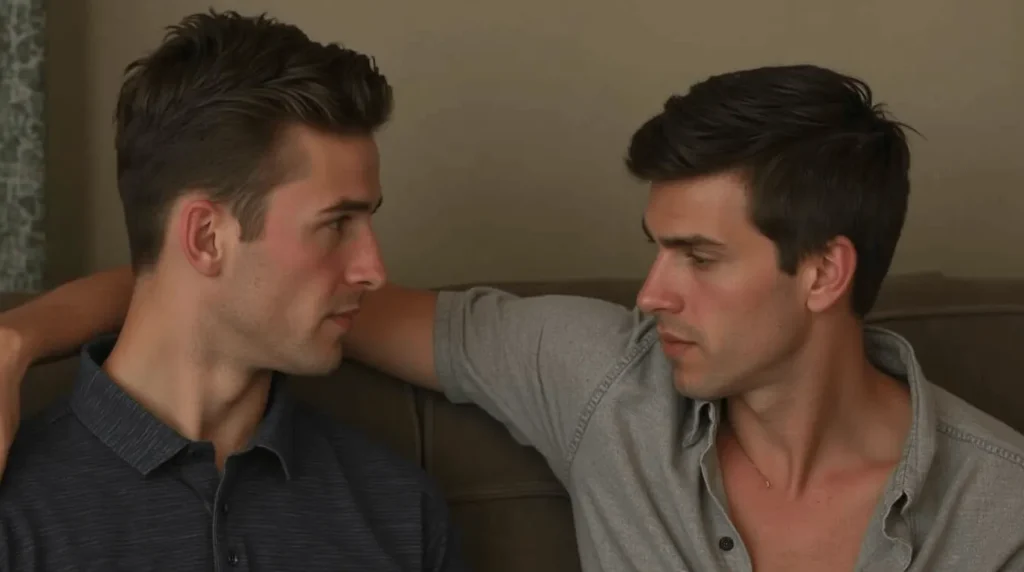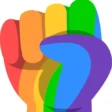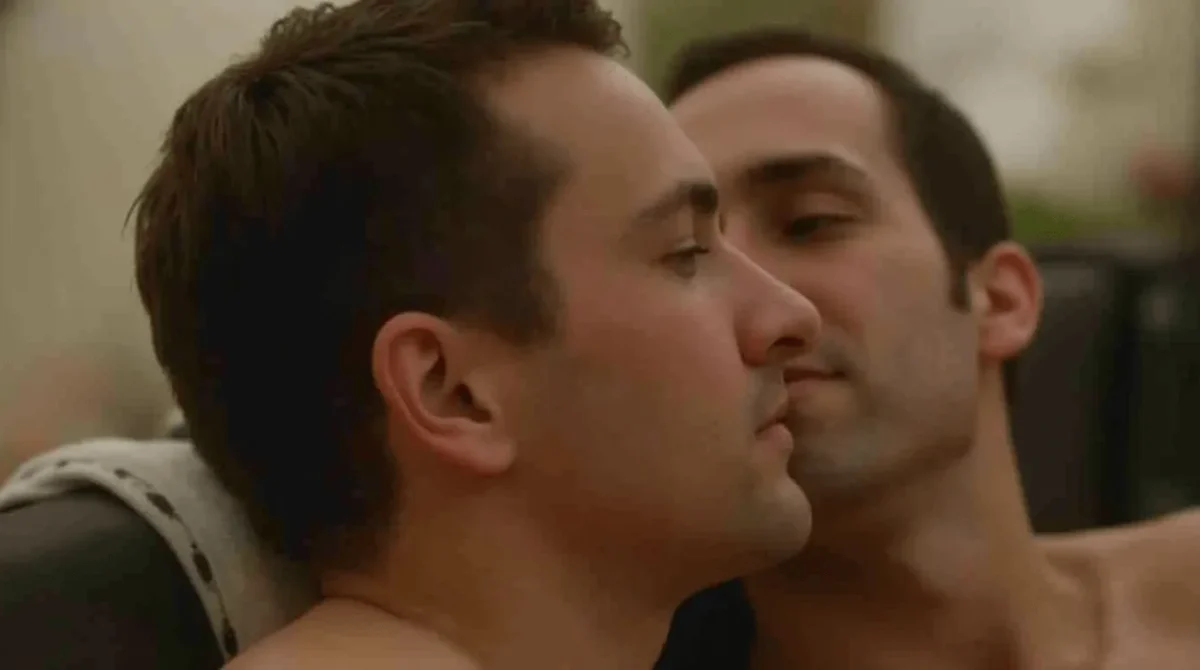You’re about to start a journey into the world of LGBTQ+ experiences through gay stories. These stories share personal struggles and victories. They give us a peek into the lives of LGBTQ+ individuals.
As you read these stories, you’ll learn about the challenges the community faces. You’ll also see their strength and resilience. The next parts will dive into the different sides of LGBTQ+ experiences. We’ll explore the depth and richness of gay stories together.
Table of Contents
The Power of LGBTQ+ Narratives in Modern Culture
LGBTQ+ stories are key in making our world more welcoming. They help us see beyond what we think we know. These stories challenge old ways of thinking, build empathy, and give a voice to those who have been quiet for too long.
Why Representation Matters
Seeing yourself in stories is powerful. It makes you feel seen and understood. Authentic representation in LGBTQ+ stories fights stereotypes and helps us see the real people behind them.
How Gay Stories Shape Understanding and Acceptance
Gay stories are important in changing how we view the world. They make us see the LGBTQ+ community in a new light. Through personal and relatable storytelling, these tales teach us to care and understand.
- Humanizing LGBTQ+ individuals through personal narratives
- Challenging stereotypes and misconceptions
- Promoting empathy and understanding
Exploring Gay Stories Throughout History
Looking into the past, we find many gay stories that shape today’s LGBTQ+ identity. These tales give us a peek into the lives of LGBTQ+ people through time. They show us the challenges and victories of the community.
Who Was the First Gay Man in History?
Finding out who was the first gay man is hard because there aren’t many old records. Yet, we know of LGBTQ+ folks in ancient times.
Ancient LGBTQ+ Narratives and Relationships
Old cultures often wrote about same-sex love, giving us a glimpse into LGBTQ+ lives long ago. For instance, ancient Greek and Roman writings often talked about gay relationships.
Who Were the First Documented Gay Lovers?
Some of the oldest stories of same-sex love are found in ancient texts. The tale of Khnumhotep and Niankhkhnum, two ancient Egyptian manicurists, is often seen as one of the earliest gay couples.
| Historical Figure | Context | Significance |
|---|---|---|
| Khnumhotep and Niankhkhnum | Ancient Egyptian manicurists | One of the earliest recorded same-sex couples |
| Sappho | Ancient Greek poet | Influential figure in LGBTQ+ literature |
By looking into gay stories from history, we learn more about the LGBTQ+ community’s journey. We see why it’s key to have stories that reflect our diversity.
5 Types of Gay Stories That Captivate Readers
Gay stories are rich and complex, reflecting the human experience. They give insight into the LGBTQ+ community and connect with readers from all walks of life.
Coming Out Narratives
Coming out stories are deeply emotional and powerful. They share the journey of self-discovery and acceptance. For example, Julie Anne Peters’ “Keeping You a Secret” shows the challenges faced by LGBTQ+ youth.
Love and Romance
Gay romance stories show love in all its forms. They range from first loves to long-lasting relationships. The works of
Historical Fiction and Non-Fiction
Historical gay stories offer a glimpse into the past. They highlight the struggles and triumphs of the LGBTQ+ community. Works like Maurice by E.M. Forster are key to understanding gay experiences through history.
| Type of Story | Description | Notable Example |
|---|---|---|
| Coming Out Narratives | Personal stories of self-discovery and acceptance | “Keeping You a Secret” by Julie Anne Peters |
| Love and Romance | Tales of love and relationships within the LGBTQ+ community | “Aristotle and Dante Discover the Secrets of the Universe” by Benjamin Alire Sáenz |
| Historical Fiction and Non-Fiction | Stories set in historical contexts, exploring the LGBTQ+ experience | “Maurice” by E.M. Forster |
| Contemporary LGBTQ+ Experiences | Narratives reflecting modern LGBTQ+ life and issues | “The Miseducation of Cameron Post” by Emily M. Danforth |
| Intersectional Stories | Tales that intersect LGBTQ+ identities with other social identities | “The Song of Achilles” by Madeline Miller |
Contemporary LGBTQ+ Experiences
Today’s stories mirror the current LGBTQ+ life. They tackle issues like identity, community, and justice. Novels like “The Miseducation of Cameron Post” by Emily M. Danforth offer deep insights into modern LGBTQ+ experiences.
Intersectional Stories
Intersectional gay stories blend LGBTQ+ identities with other social identities.
“The Song of Achilles” by Madeline Miller is a beautiful example of intersectional storytelling, weaving together themes of love, war, and identity.
These categories show the diversity and richness of gay stories. They offer something for every reader. Whether you prefer historical tales or contemporary romances, gay literature is vast and captivating.
Where Can I Read Gay Stories? Top Resources
Many places online and in print offer gay stories. The internet has made it easy to find a variety of LGBTQ+ stories.
Popular Websites and Platforms for LGBTQ+ Fiction
There are many websites and platforms for LGBTQ+ fiction, including gay stories. Some top choices include:
- Online literary magazines with LGBTQ+ content
- Social media for sharing stories
- Dedicated LGBTQ+ fiction websites
Which Is the Best Gay Site for Quality Stories?
Finding the “best” site is up to personal taste. But, Goodreads and Wattpad are favorites for their large collections and active communities.
Essential LGBTQ+ Book Collections and Publishers
If you like physical or e-books, many publishers focus on LGBTQ+ literature. Some key ones are:
| Publisher | Notable Works |
|---|---|
| Lethe Press | Known for publishing LGBTQ+ fiction and non-fiction |
| Alyson Books | Has a history of publishing influential LGBTQ+ works |
| Tor Books | Publishes a range of LGBTQ+ science fiction and fantasy |
American LGBTQ+ Literary Archives
For those into historical LGBTQ+ literature, the ONE National Gay & Lesbian Archives is a treasure. It’s located at the University of Southern California.
7 Influential LGBTQ+ Authors and Their Contributions
Influential LGBTQ+ authors have shown the world the depth of their experiences. They have shaped our culture through their stories. Their work has also made the literary world more diverse and inclusive.
Pioneering Gay and Lesbian Writers
Authors like Radclyffe Hall and James Purdy paved the way for others. They broke barriers with their writing, challenging the norms of their time. Their work has enriched our literary history.
Contemporary LGBTQ+ Literary Voices
Today, writers like Imogen Binnie and Casey Plett are making waves. They bring new stories and perspectives to the table. Their work connects with readers all over the world.
Emerging Authors Reshaping the Landscape
New voices are changing the literary world. They bring fresh ideas and stories. Their contributions keep the literary scene alive and welcoming.
Notable American LGBTQ+ Authors
America has seen many influential LGBTQ+ writers. Here are a few notable ones:
| Author | Notable Work | Contribution |
|---|---|---|
| Allen Ginsberg | “Howl” | Beat poetry and LGBTQ+ visibility |
| Armistead Maupin | “Tales of the City” | Serialized novels and LGBTQ+ representation |
| Andrew Sean Greer | “Less” | Contemporary LGBTQ+ fiction |
Personal Gay Stories That Changed American Culture
Personal stories in the LGBTQ+ community have greatly influenced American culture. They have helped us understand and accept each other better. These tales, from activists to celebrities, have shaped how we see the world and pushed for change.

Activist Narratives and Their Impact
Marsha P. Johnson and Sylvia Rivera were key figures in the LGBTQ+ rights movement. Their stories of overcoming obstacles have inspired many. As Marsha P. Johnson once said, “If I had to worry about my safety here, worrying about the police, and worrying about getting beat up by some thug, I wouldn’t be able to do the work that I do.”
Celebrity Coming Out Stories
Celebrities coming out have also made a big difference. When Ellen DeGeneres came out in 1997, it was a major moment for visibility. Anderson Cooper’s coming out has helped us understand LGBTQ+ identities better.
“I am gay, and I am happy.” – Anderson Cooper
Everyday Heroes in the LGBTQ+ Community
Everyday people in the LGBTQ+ community also have inspiring stories. Their experiences show the diversity and richness of LGBTQ+ lives. They challenge stereotypes and help us feel empathy.
How Personal Stories Shaped LGBTQ+ Rights
Personal gay stories have been key in shaping LGBTQ+ rights in America. By sharing their lives, people have made the movement more relatable. This has helped get support for laws and programs that fight for equality.
Reflecting on these stories, it’s clear they’ve changed American culture and paved the way for a more inclusive future. The ongoing sharing of personal stories is crucial for the fight for LGBTQ+ rights and understanding.
How to Share Your Own Gay Stories and Experiences
Sharing your gay stories helps build a community. It also promotes understanding and acceptance. By sharing, you add to the rich stories of the LGBTQ+ community.
Finding Your Authentic Voice
To share your story well, be true to yourself. Embrace your authentic voice. Be honest and don’t try to fit into someone else’s mold. Your unique view makes your story special and relatable.
Platforms for Sharing Personal LGBTQ+ Narratives
You can share your gay stories on many platforms. These include social media, personal blogs, and LGBTQ+ websites. Choose the right platform based on your comfort and who you want to reach.
| Platform | Audience | Benefits |
|---|---|---|
| Social Media | Wide and diverse | Easy to use, high visibility |
| Personal Blogs | Targeted and engaged | Full control over content, SEO benefits |
| LGBTQ+ Websites | LGBTQ+ community focused | Relevant audience, community building |
Building Community Through Storytelling
Sharing your gay stories helps build a community. It connects you with others who have similar experiences. This fosters empathy and understanding.
The Therapeutic Value of Sharing Your Story
Sharing your story has therapeutic benefits. It can be cathartic, helping you process and heal. Expressing your experiences and emotions can be very healing.
Conclusion: The Enduring Importance of LGBTQ+ Narratives
LGBTQ+ stories are now a big part of our culture. They help us understand and accept the LGBTQ+ community. These stories give people a chance to share their lives, struggles, and victories.
Looking at gay stories, famous authors, and personal tales, it’s clear they’re key. They help us feel empathy and understanding. By sharing your story or listening to others, you help make our culture richer and more welcoming.
LGBTQ+ stories do more than just help the community. They make our society kinder and more open. As you dive into these stories, you join a movement that values diversity and understanding.
FAQ
Who was the first gay man in history?
Finding the first gay man in history is tricky. Historical records of LGBTQ+ people are often unclear. But, ancient civilizations like Ancient Greece and Rome show early same-sex relationships.
Where can I read gay stories?
You can find gay stories online. Look for LGBTQ+ fiction websites, literary magazines, and book blogs. Also, check out digital archives and social media for authors and readers.
Who were the first gay lovers?
Finding the first gay lovers is hard due to unclear historical records. But, ancient texts like the Epic of Gilgamesh show early same-sex love.
What are some popular types of gay stories?
Many types of gay stories are popular. These include coming out tales, love stories, historical fiction, and stories about today’s LGBTQ+ experiences. Also, intersectional stories that explore identity and community.
How can I share my own gay story?
To share your gay story, find your true voice. Look for places to share, like online groups or social media. Always think about your comfort and boundaries when sharing.

